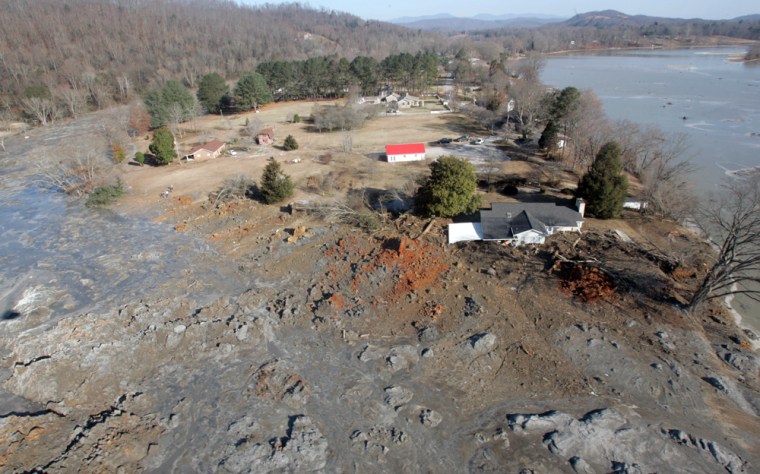The Obama administration has decided to keep secret the locations of nearly four dozen coal ash storage sites that pose a threat to people living nearby.
The Environmental Protection Agency classified the 44 sites as potential hazards to communities while investigating storage of coal ash waste after a spill at a Tennessee power plant in December. The classification means the waste sites could cause death and significant property damage if an event such as a storm, a terrorist attack or a structural failure caused them to spill into surrounding communities.
The sites have existed for years with little or no federal regulation.
The Army Corps of Engineers in a letter dated June 4 told the EPA and the Federal Emergency Management Agency that the public should not be alerted to the whereabouts of the sites because it would compromise national security.
"Uncontrolled or unrestricted release (of the information) may pose a security risk to projects or communities by increasing its attractiveness as a potential target," Steven L. Stockton, the Army Corps' director of civil works, wrote in a letter obtained by The Associated Press.
Boxer: 'It is essential to let people know'
Sen. Barbara Boxer, D-Calif., in a news conference Friday, questioned why coal ash storage ponds are not treated like other hazardous waste sites. For instance, the EPA readily discloses the location of Superfund hazardous waste sites and also annually reports pollution released by chemical facilities and other factories in neighborhoods.
"If these sites are so hazardous, and neighborhoods nearby could be harmed irreparably, I think it is essential to let people know," said Boxer, adding that she was told the location of the sites with the understanding that she could tell only Senate colleagues whose states have one or more of the storage facilities. The EPA was allowed to inform local emergency officials, but not the public.
The Army Corps of Engineers had no immediate comment.
December spill covered 300 acres
On Dec. 22, more than 5 million cubic yards of ash and sludge poured out of a storage pond after an earth dike failed at a power plant near Kingston, Tenn. The grayish, toxic muck covered 300 acres and destroyed or damaged 40 homes.
The EPA estimates that about 300 dry landfills and wet storage ponds are used across the country to store ash from coal-fired power plants. The man-made structures hold a mixture of the noncombustible ingredients of coal and the ash trapped by equipment designed to reduce air pollution from the power plants.
The latest Energy Department data indicates that 721 power plants nationwide produced 95.8 million tons of coal ash in 2005. The ash can contain heavy metals and other toxic contaminants, but there are no federal regulations or standard that govern its storage or disposal
The EPA is currently considering regulating the waste, but it is unclear whether the agency will classify it as hazardous or regulate it like household waste.
A March 2000 study by the agency found that coal ash wastes in landfills and ponds had the potential to present dangers to human health and the environment. In 2000, when it first floated establishing a national standard for the facilities, the agency knew of 11 cases of water pollution linked to ash ponds or landfills. In 2007, that list grew to 24 cases in 13 states with another 43 cases where coal ash was the likely cause of pollution.
